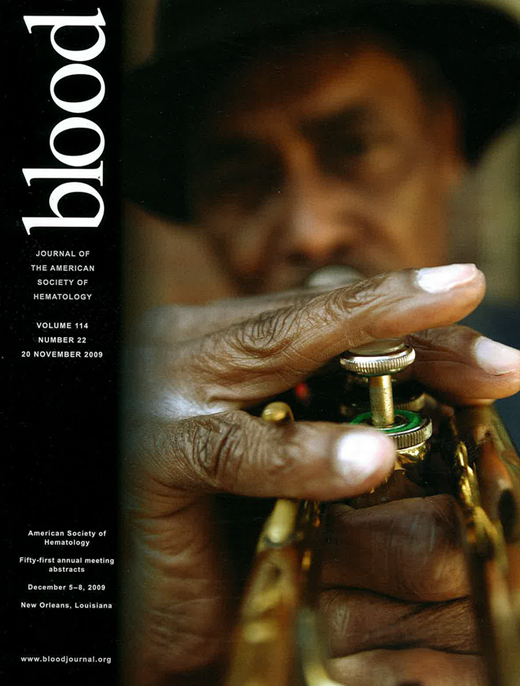Abstract
Abstract 4327
Traditional transplant conditioning regimens are associated with high toxicities. These days the two most widely used myeloablative conditioning regimens combine either cyclophosphamide (CY) and fractionated total body irradiation (TBI) 1000 or 1200 cGy or busulfan (Bu)/CY. These regimens have a limiting factor regarding co-morbidities or age since high dose radiation and /or chemotherapy-induced toxicity. In an attempt to extend allogeneic stem cell transplantation to older patients and those with medical co-morbidities, reduced-intensity conditioning (RIC) regimens have been increasingly used. RIC regimens have lower rates of severe toxicity; however relapse remains the most common problem.
So, recent studies have been focused on regimens to reduced relapse rate without increasing toxicity. The use of conditioning regimens containing busulfan and fludarabine (Flu) is being investigated recently to a reduction of transplant-related mortality (TRM). And the addition of TBI 400 cGy to a Flu/Bu combination has been designed.
To define the role of RIST in myelodysplastic syndrome as classified by World Health Organization (WHO) criteria, we retrospectively analysed patient who received SCT with Flu/Bu and TBI 400cGy or Flu/Bu/TBI 400 cGy/antithymocyte glogulin (ATG) conditioning regimen. There were 23 men and 8 women with a median age of 39 years (range 19-63). The patients were categorized, according to WHO criteria, as refractory anemia (n = 4), refractory cytopenia with multi-lineage dysplasia (RCMD) (n = 16), RAEB-1 (5%-9% bone marrow blasts; n = 7) and RAEB-2 (.10% bone marrow blasts; n = 4). They were classified according to the International Prognostic Scoring System (IPSS) as intermediate-1 (n = 24), intermediate-2 (n = 4), or high (n = 3). Patients were transplanted from HLA-mismatched unrelated donors (n = 4), matched unrelated donors (n = 11), mismatched sibling (n = 1), matched sibling (n = 15). Four patients received ATG containing regimen. Three of them were transplanted using bone marrow stem cells of <= 2- allele mismatched unrelated donors and one patient was transplanted from matched related donor. Calcineurin inhibitor (Cyclosporine A (CsA) or tacrolimus) and a short course of standard dose methotrexate were used to prevent graft-versus-host disease (GVHD). All patients achieved engraftment. At a median follow-up of 25 months (range 3.0-40.1 months) for survivors, the estimated 2-year rates of overall survival, event-free survival(EFS), transplantation-related mortality, and relapse were 67.5%, 69.8%, 24.3%, and 10.9%, respectively. The incidence of acute (grades II-IV) and chronic (extensive, Original Seattle classification) GVHD of the patients who survived at least 100 days with sustained engraftment of the transplantation was 38.7 and 34.5%. The present study suggests that the Flu/Bu and TBI 400cGy or Flu/Bu/TBI 400 cGy/antithymocyte glogulin (ATG)-based conditioning regimen maybe a feasible therapeutic approach for myelodysplastic syndrome as classified by World Health Organization (WHO) criteria.
No relevant conflicts of interest to declare.
Author notes
Asterisk with author names denotes non-ASH members.

